Garmin Fenix 8 47mm vs 51mm: I wore both watches for two weeks to compare the two sizes
How big is too big for a sports watch?
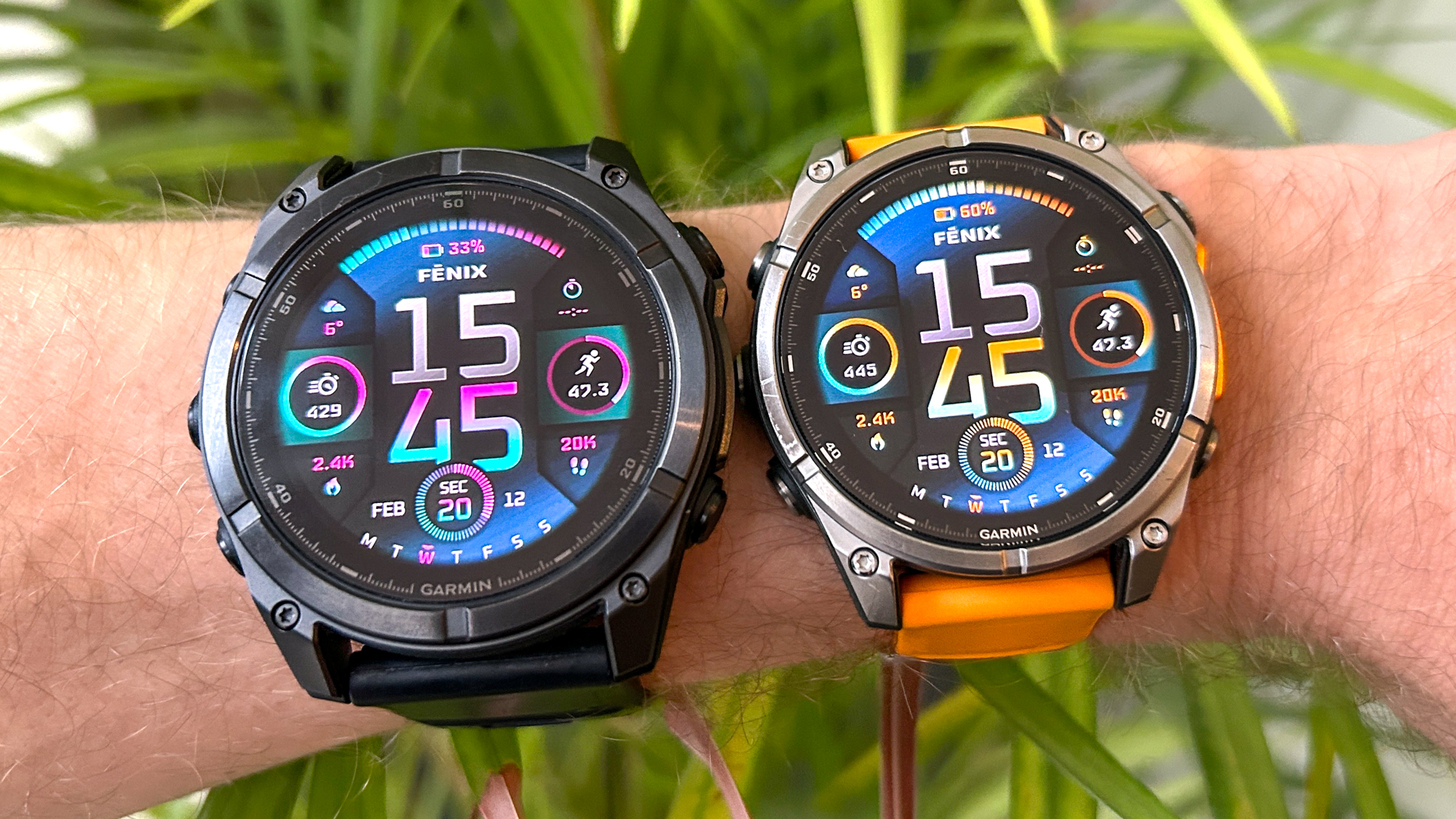
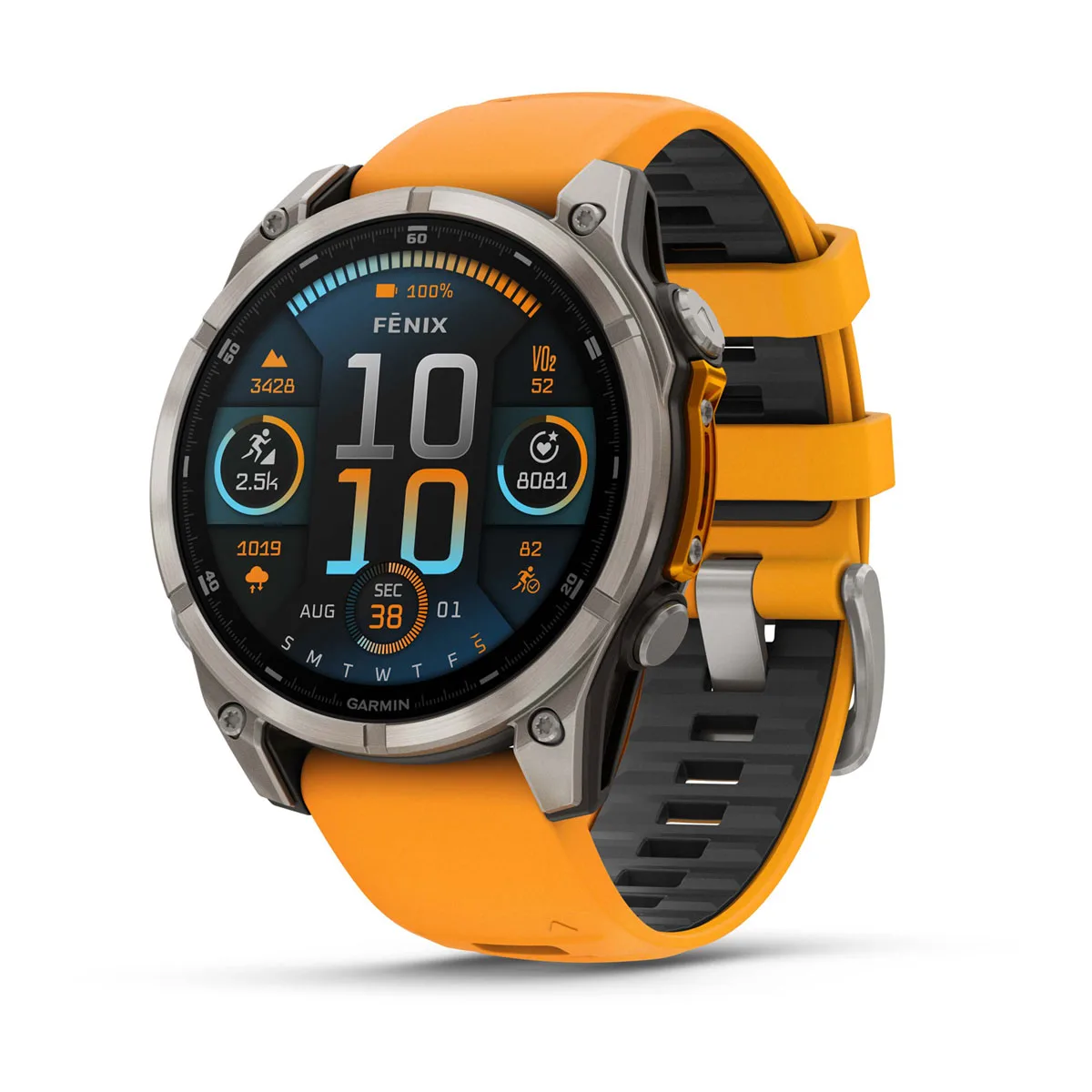
The smaller model of the Fenix 8 does give up a lot of battery life compared with the 51mm watch, but the lighter design is less bulky and also has a smaller bezel, making it the better looking watch in my opinion.
For
- Lighter and smaller than 51mm
- Cheaper than 51mm
- Smaller bezel
Against
- Shorter battery life than 51mm
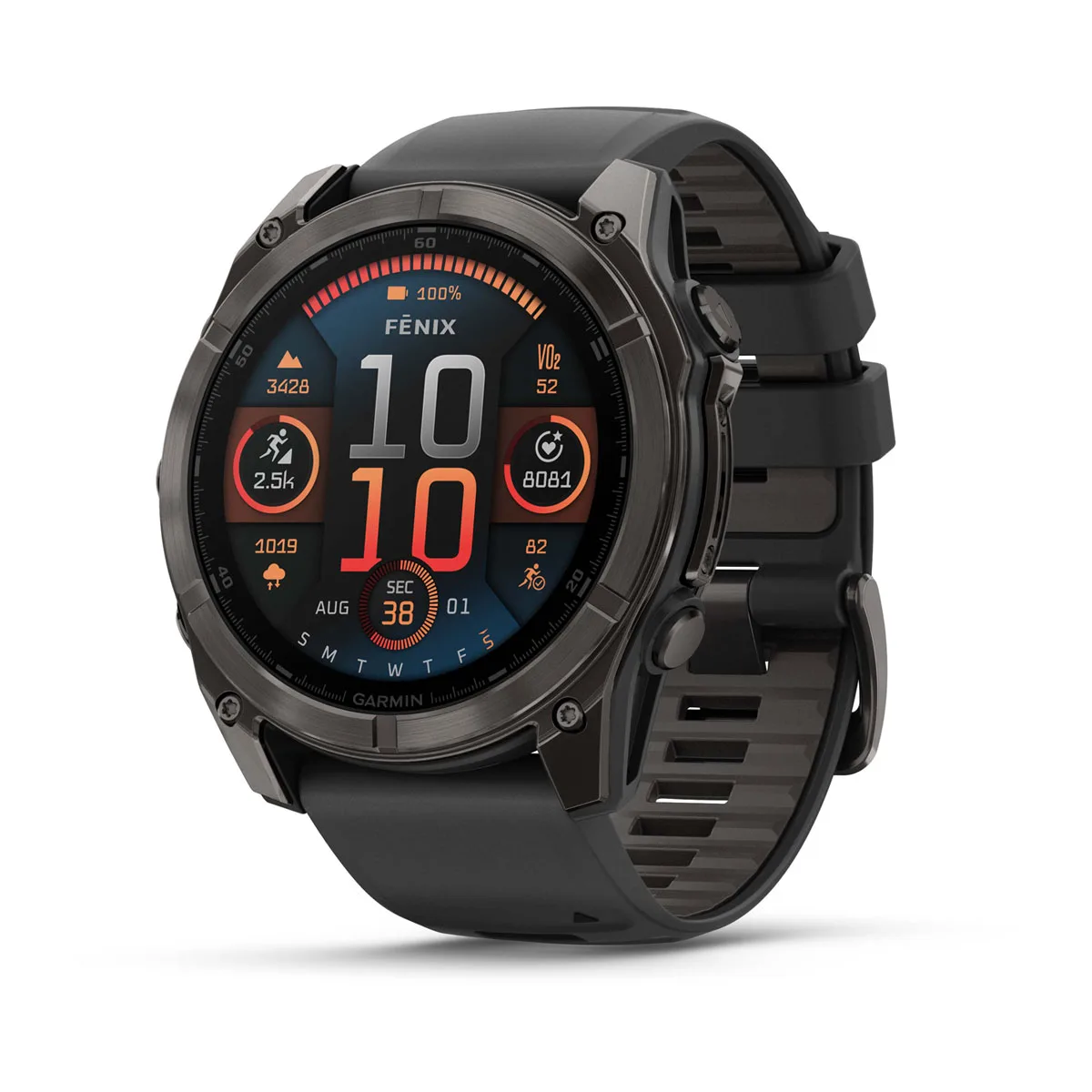
The Garmin Fenix 8 51mm sits at the top of the Fenix 8 range with regards to price, size and battery life. The jump in battery life compared with the 47mm is huge, but you have to be comfortable with wearing a larger watch to enjoy it.
For
- Incredible battery life
- Some will prefer larger size
Against
- Bigger and heavier than 47mm
- More expensive than 47mm
The Garmin Fenix 8 is one of the best sports watches available, offering all of Garmin’s top sports tracking, training analysis and navigation features plus useful smarts like music storage. If its high price doesn’t deter you then it’s the best Garmin watch to get, but you’ll still have to make a decision on which size you should go for.
There are three sizes available in the Garmin Fenix 8 range — 43mm, 47mm and 51mm. However, I only have two wrists, so I opted to compare the two larger sizes with my testing, wearing the 47mm and 51mm watches for two weeks.
I’ve actually worn both watches for longer than that independently, using the 51mm watch during testing for my Garmin Fenix 8 review and the 47mm watch for the past month or so. Here’s what I’ve noticed as the key differences between the two sizes, and how they fit on my skinny wrists.
Garmin Fenix 8 47mm vs 51mm: price
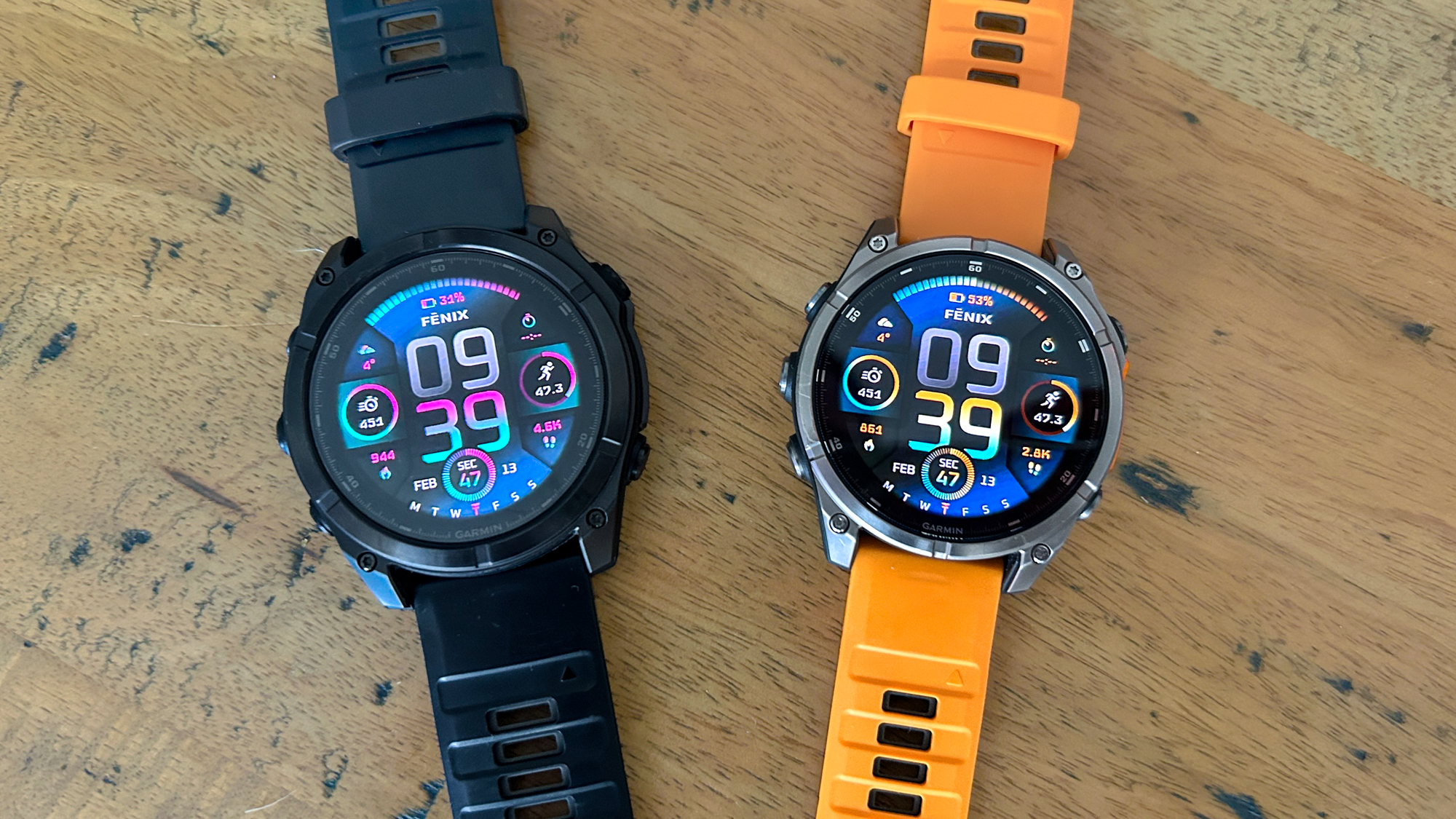
There are several models of the Fenix 8 47mm and 51mm to pick between and in general you pay $100 more for a 51mm watch compared to a 47mm watch.
The Fenix 8 47mm AMOLED costs $999/£869 or $1,099/£949 depending on whether you go for steel or titanium, while the Fenix 8 51mm costs $1,099/£949 or $1,199/£1,039.
For the solar versions of the watches there are only titanium models available, and it costs $1,099/£949 for the 47mm watch and $1,199/£1,039 for the 51mm watch.
The price difference means that you can get a sapphire titanium model of the 47mm for the same price as the steel 51mm watch with a glass screen, which is a considerable upgrade on materials, with the titanium model being lighter and more durable.
Garmin Fenix 8 47mm vs 51mm: specs
The key differences between the watches are their size, battery life and price, so that’s the specs I’ll highlight here, with their sensors, materials and other features being identical.
| Row 0 - Cell 0 | Garmin Fenix 8 47mm | Garmin Fenix 8 51mm |
Price | $999/£869 - $1,099/£949 (AMOLED); $1,099/£949 (Solar) | $1,099/£949 - $1,199/£1,039 (AMOLED); $1,199/£1,039 (Solar) |
Case size | 47 x 47 x 15.2mm | 51 x 51 x 15.4mm |
Case weight | 59g steel; 52g titanium | 74g steel; 64g titanium |
Display | 1.4in AMOLED or 1.3in MIP | 1.4in AMOLED or MIP |
AMOLED Battery life (watch mode) | 16 days/7 days always-on | 29 days/13 days always-on |
AMOLED Battery life (all-systems GPS) | 38 hours/30 hours always-on | 68 hours/54 hours always-on |
Solar Battery life (watch mode) | 21 days/28 days with solar | 30 days/48 days with solar |
Solar Battery life (all-systems GPS) | 48 hours/59 hours with solar | 68 hours/92 hours with solar |
Garmin Fenix 8 47mm vs 51mm: design & comfort
I tested the sapphire titanium models of the Fenix 8 AMOLED for both the 47mm and 51mm watches, with both being considerably lighter than the steel version of the watches. I used the silicone bands they come with for the side-by-side comparison, but have also used them with nylon bands which I find lighter and more comfortable.
For reference, my wrist size is 6.1-6.3in/15.5-16cm, depending on whether I had the strap tightened up for running or a bit looser for general wear, so bear in mind that my wrists are pretty skinny for this comparison of the watches.
The Fenix 8 47mm is more comfortable to wear 24/7 thanks to its smaller, lighter design, and even though it’s only listed as 0.2mm thinner than the 51mm watch, I noticed that it stuck out from my wrist less and I caught it less often on the sleeves of jumpers and running jackets.
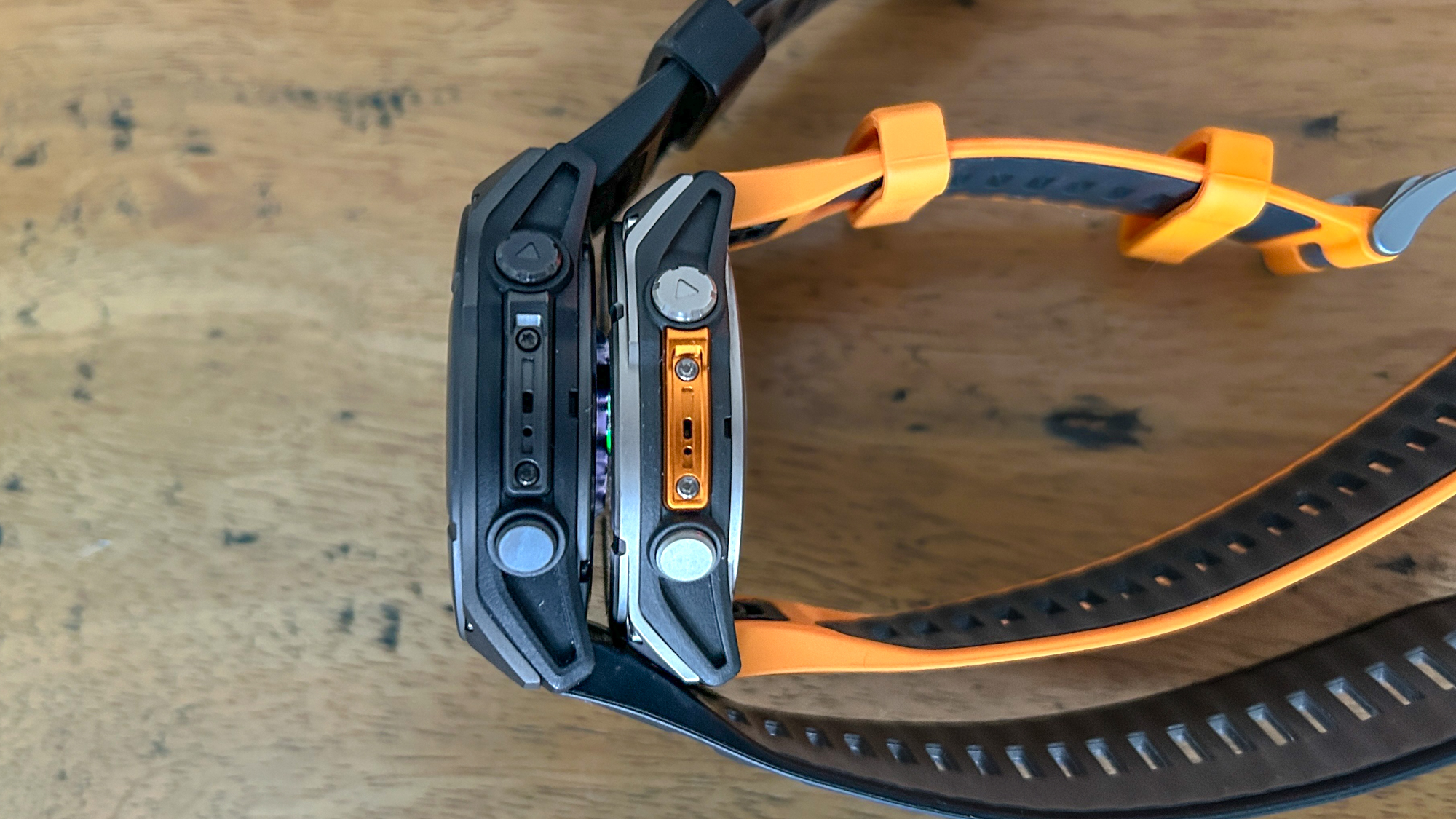
Both AMOLED watches have the same 1.4in screen, so the extra size on the 51mm watch is down to its thicker bezel, which for me makes it a less attractive watch than the 47mm watch, though some will prefer the chunkier look of the 51mm.
The different sizes of the watches were particularly noticeable at night, when I occasionally struggled to sleep with the 51mm watch on because I was so aware of it. However, you do get used to the 51mm watch, and it’s comfortable to wear all the time for the most part.
I’m not concerned about looking ‘silly’ because I have a very large watch on my thin wrist; I happily wore the Garmin Epix Pro 51mm watch for a year, but when wearing both the 47mm and 51mm Fenix 8 at the same time, the extra comfort of the smaller watch was noticeable.
Winner: Garmin Fenix 8 47mm
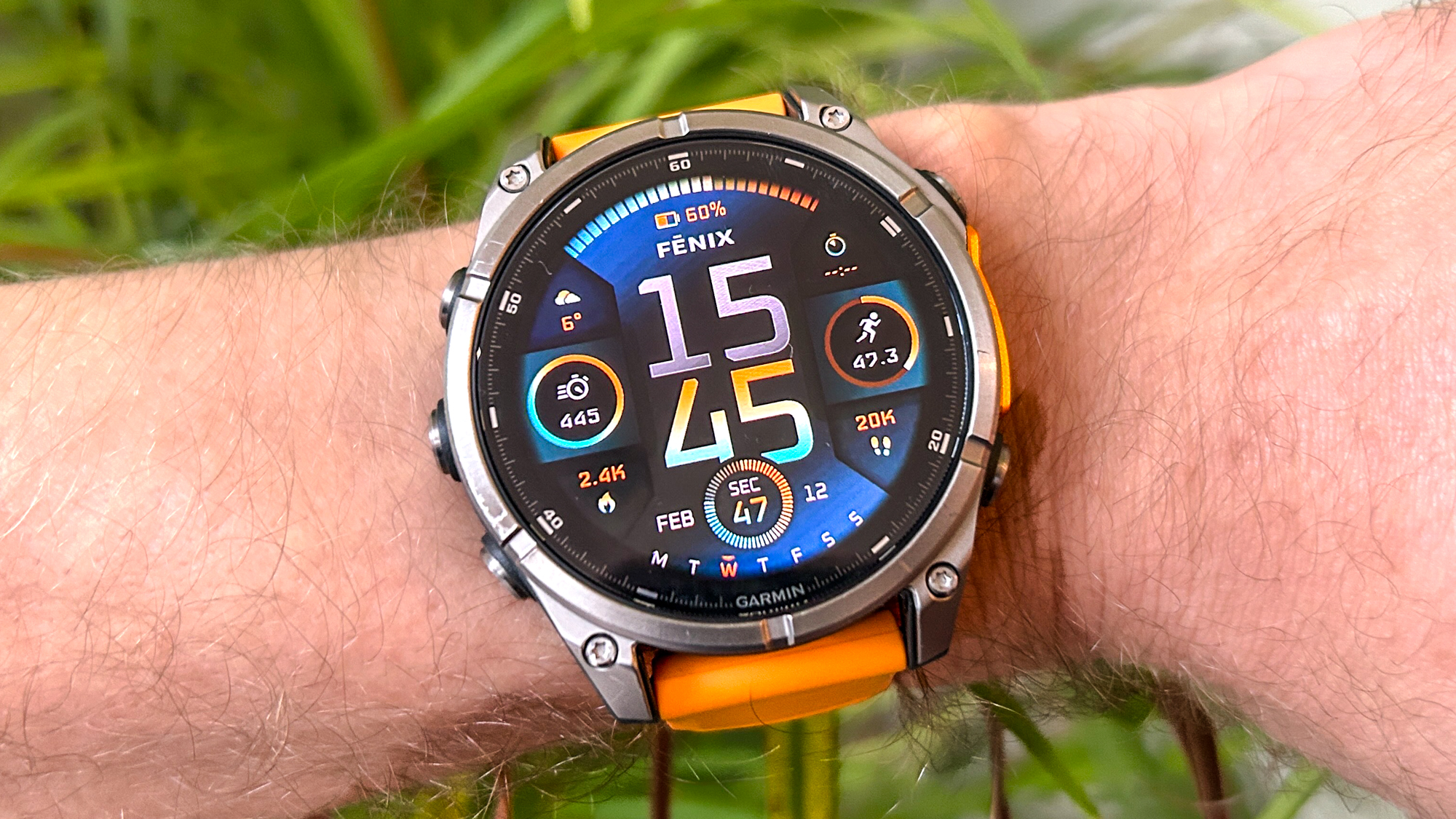
Garmin Fenix 8 47mm vs 51mm: battery life
As you would expect, the Fenix 51mm offers more battery life than the Fenix 8 47mm, but the size of the difference surprised me during my use. With the AMOLED watches I had the screen set to always-on and the most power intensive multi-band GPS mode enabled, running every day.
With this heavy use, the Fenix 8 47mm lasted me six days on a charge, sometimes seven days at a push if some of my runs were indoors or I was training less. The Fenix 8 51mm lasted 12-13 days with the same use, pretty much doubling the Fenix 8 47mm.
The difference is similarly big with the AMOLED screen set to raise to wake; here too, the 51mm Solar watch also comfortably outlasts the 47mm Solar. If battery life is vital for you then the 51mm might well be worth the upgrade, though I would say the 47mm Fenix 8 still lasts an impressively long time for an AMOLED watch.
Winner: Garmin Fenix 8 51mm
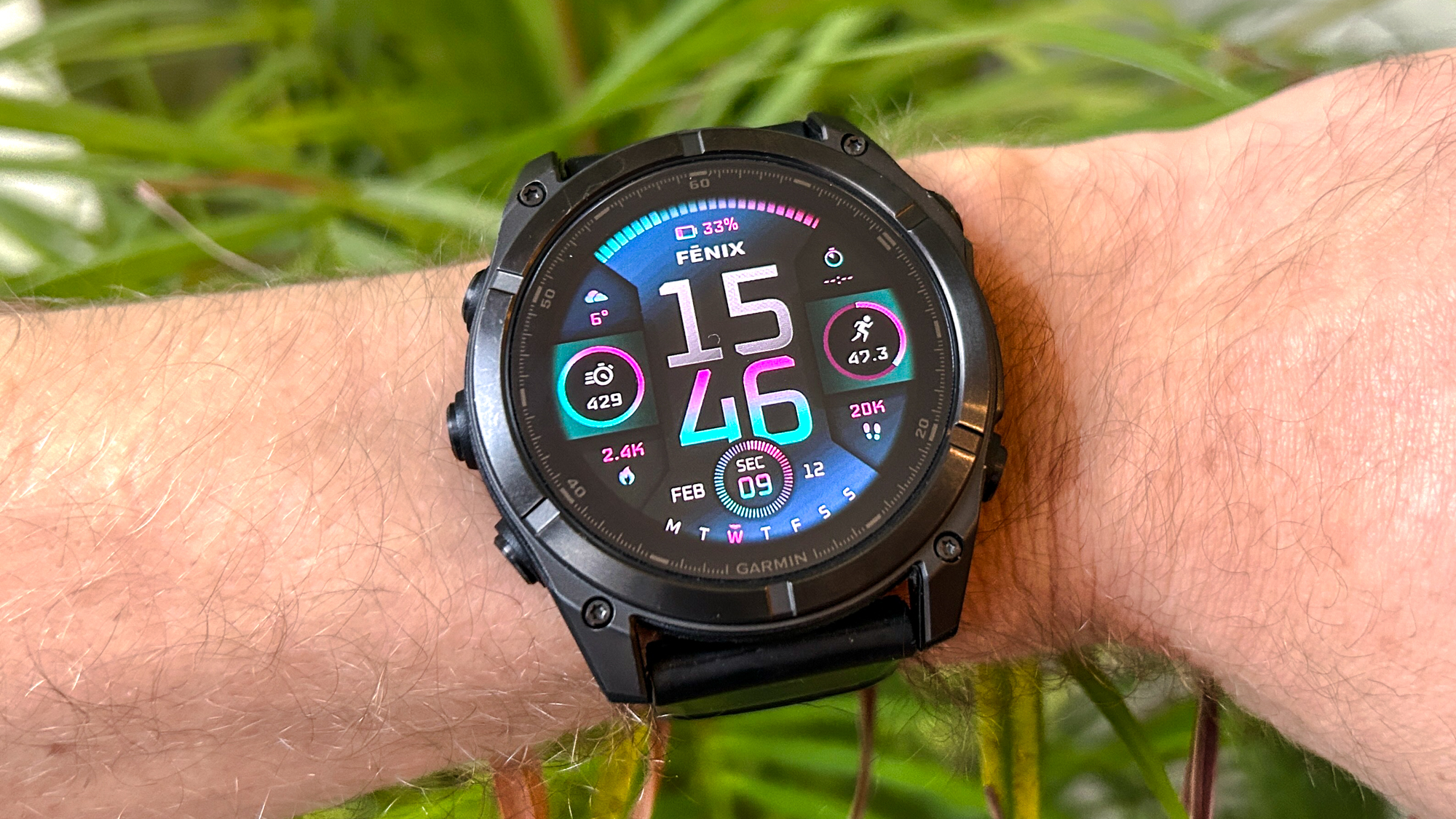
Garmin Fenix 8 47mm vs 51mm verdict
The choice between sizes mostly comes down to greater comfort of the 47mm watch vs the longer battery life of the 51mm, with the smaller watch having the added bonus of being cheaper.
That saving is important because I’d rather have the more durable and lighter sapphire titanium 47mm Fenix 8 vs the steel 51 Fenix 8 for the same price — the difference in weight is also 22g with these two models.
In general, with my thin wrists I think the 47mm watch is the better pick overall, because it still does offer great battery life. However, those with thicker wrists or for whom longer battery life is essential will prefer the 51mm watch, which is still comfortable to wear most of the time.
Sign up to get the BEST of Tom's Guide direct to your inbox.
Get instant access to breaking news, the hottest reviews, great deals and helpful tips.

Nick Harris-Fry is an experienced health and fitness journalist, writing professionally since 2012. He spent nine years working on the Coach magazine and website before moving to the fitness team at Tom’s Guide in 2024. Nick is a keen runner and also the founder of YouTube channel The Run Testers, which specialises in reviewing running shoes, watches, headphones and other gear.
Nick ran his first marathon in 2016 after six weeks of training for a magazine feature and subsequently became obsessed with the sport. He now has PBs of 2hr 27min for the marathon and 15min 30sec for 5K, and has run 13 marathons in total, as well as a 50-mile ultramarathon. Nick is also a qualified Run Leader in the UK.
Nick is an established expert in the health and fitness area and along with writing for many publications, including Live Science, Expert Reviews, Wareable, Coach and Get Sweat Go, he has been quoted on The Guardian and The Independent.
You must confirm your public display name before commenting
Please logout and then login again, you will then be prompted to enter your display name.
